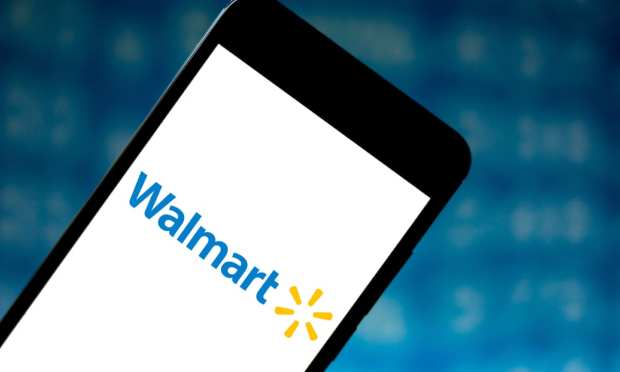Whole Paycheck: Walmart Says It’s Winning Omnichannel Fight Against Amazon

No company wants to be given a $20 billion haircut in the markets, but that’s exactly what happened to Walmart on Thursday (Feb. 18), as the company’s adjusted earnings per share came in about 13 cents, or 8 percent, less than analysts were counting on.
Forget about the fact that the largest retailer on earth just delivered its highest-ever sales for the quarter and year, or that its increasingly important digital revenues grew by nearly 70 percent, or that it was raising cash, exiting slow-growth markets and seeking greener pastures. Investors were having none of it, and expressed their short-term displeasure accordingly.
But in the equivalent of a halftime speech that would have made Knute Rockne proud, Walmart’s “coaching staff” let investors and rivals know that this game was far from over, and that the omnichannel fight against Amazon was shifting in its favor — without ever mentioning its online rival’s name.
“Now is the time to play even more aggressive offense,” Walmart CFO Brett Biggs told investors on the company’s earnings call. “We’re winning, and we intend to keep pushing the ball aggressively down the field,” he added, alluding to a planned 30 percent increase in capital expenditures this year of more than $14 billion, which will primarily be deployed in the U.S. to support growth and efficiency initiatives.
“We need to lean in more aggressively in key markets with increased capital and fulfillment capacity, supply chain automation and technology,” Biggs said, noting that the new infrastructure would allow Walmart to expand its eCommerce assortment while reducing shipping time and cost.
What Doesn’t Kill Me…
Walmart’s strategy is nearly identical to the Amazon playbook, except for 11,000 gigantic differences: Walmart’s global network of brick-and-mortar stores, which have become invaluable cogs in the modern omnichannel machine. Not only is Walmart investing more in pick-up and delivery, but it’s constantly adding other services — like vaccines, money transfers and dental care — which bring in more customers, who more often than not end up buying something else.
While investors might be feeling impatient with the fact that Amazon has steadily grown over the past decade to be four times larger than Walmart, management at the self-titled “low-cost leader” is stressing that the retailer is on a multi-year journey of modernization. “Over the next few years, we expect Capex to be around 2.5 to 3 percent of sales,” Briggs said, noting that was only about half as costly as the company’s Supercenter rollout phase in the ’90s.
“After a year or so of transition, these investments should put us in a position for 4-plus percent sales growth and [even higher] operating income growth rates,” Biggs predicted, pointing out that 4 percent top-line growth at a company that just did half a trillion in sales “is basically the equivalent of adding a Fortune 100 company every year.”
Amazon Says: Bring It
As much as Walmart is hustling to leverage its store count advantage, where 90 percent of Americans live within 10 miles of a location, Amazon is equally committed to compressing delivery times to get goods to people’s homes sooner, while convincing more businesses to sell goods on its platform. To facilitate that strategy, Amazon announced this week that it is acquiring Australian eCommerce platform Selz, which specializes in helping small to mid-size businesses (SMBs) to bridge the digital divide by processing payments and selling more merchandise.
That acquisition is also notable because Selz is one of Shopify’s competitors, and is seen as a way to bring more businesses into Amazon’s tent rather than Shopify’s, which now powers over one million commerce websites across 175 nations and saw its profits explode by 96 percent in 2020. The fact that Shopify has signed a spate of high-profile partnerships lately — including deals with Walmart, Instacart, Facebook and TikTok — is also seen as a catalyst for the deal.
A Post-Bezos Amazon
Ever since announcing that Amazon Founder and CEO Jeff Bezos was transitioning from his day-to-day role and into an executive chairman position, investors and pundits have tried to make sense of it all. Although the CEO’s reins won’t be handed over to Amazon Web Services Chief Andy Jassy until July 1, it has been clear from the outset that the hard-charging 57-year-old billionaire — who on any given day may be the richest man on earth, depending on Amazon’s stock performance — is not the retiring type.
“Executive chairs are often very involved, and he sounds like he will be very involved as a partner with Andy. And that’s a good thing. It’s a busy place, lots going on,” Wharton management professor Michael Useem said during an interview with the Wharton Business Daily show.
Some have questioned the logic of Amazon putting the head of its cloud computing web services in charge of a global retailing business, but company watchers point out that Jassy has been at Amazon since 1997, and at Bezos’ side for much of the time. “I wouldn’t anticipate massive changes in Amazon’s strategy, which has been pretty consistent over the last 25 years — focus on the customer, provide the customer with the best customer experience possible,” Wharton marketing professor Barbara Kahn said. “Bottom line, I don’t think the customers will notice this change in their everyday dealings with Amazon.”
